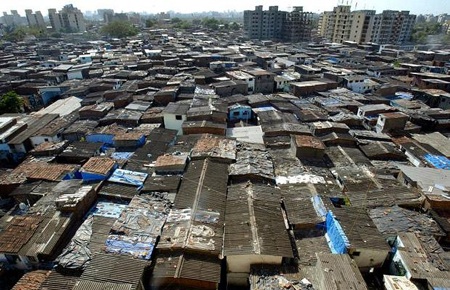Slumdog Tourism
Slum tourism or “poor-ism” has been around a while. There was a good New York Times article on the trend in visiting squatter cities in March 2008. You can get slum tours in Mexico, South Africa, Brazil and India. In my own travels years ago I would frequently do slum tours without knowing it. It was called “wandering around”. By any name, if you have a chance, it’s worth doing.

The movie Slumdog Millionaire has sparked interest in a Mumbai slum tours, which started two years ago, and since they are safer than ones in Brazil, have become quite popular. The Mumbai slum Dharavi is billed as the “largest sum in Asia.” Several outfits, particularly the original Reality Tours give tours to “one of the most interesting places to see in Mumbai.” I’ve been to Bombay (Mumbai now) several times, and I would have to agree with the last statement.
According to a Mumbai metro blog:
The [Reality Tours] agency, started by Chris Way, a young British transplant, sells tours of Mumbai’s slum neighbourhoods, promising a unique way to experience the “real” Mumbai.
One option is a budget, three-hour walking tour of Dharavi, Asia’s biggest slum, in the central suburb of Mahim. There residents earn a living by making clay pots and soap or recycling the city’s waste. A longer car tour offers more: a visit to a children’s shelter; a stop to watch the city’s dhobis (washermen) at work; a drive past the vast textile mills that are being torn down and replaced with glitzy malls and office blocks; and then on to Dharavi.
These tours are great value-at about $7 for the walking tour and $13 for the one by car-and for a good cause: 80% of the fee goes to a local charity that helps slum dwellers.
Further details about you can expect to see on the slum tour:
The east flank of the Mahim Station is dominated by the plastic and metal recycling catacombs of 13th compound. It is amazing to see the heavy machinery’s melting and molding the plastic pellets for toys and button manufacturers producing Barbi Dolls of India. The delicious aroma from tiny bakeries and sweet shops, the exotic smell of soaps and cosmetics creates new magical incense, one can feel instantaneously. The dime-sized cyber cafes, mass-producing tailors, altar shapers and the children waving from the precipitous balconies is the most happening in slums that qualifies an active show and tell.
It will not be a boasting to say that Dharavi churns out some 500 million dollars worth of goods. The mostly unregistered and unregulated industries range from tanneries to plastic re-cyclers, garment factories to potters brick kilns every thing is there.
UPDATE: Photographer Jonas Bendiksen has produced an exhibit and book based on his photographs of four different mega-slums around the world. The website The Places We Live gives a virtual 360 degree tour inside four homes in each location. Clear, sympathetic, engrossing photos. The book “The Places We Live”is available on Amazon.



